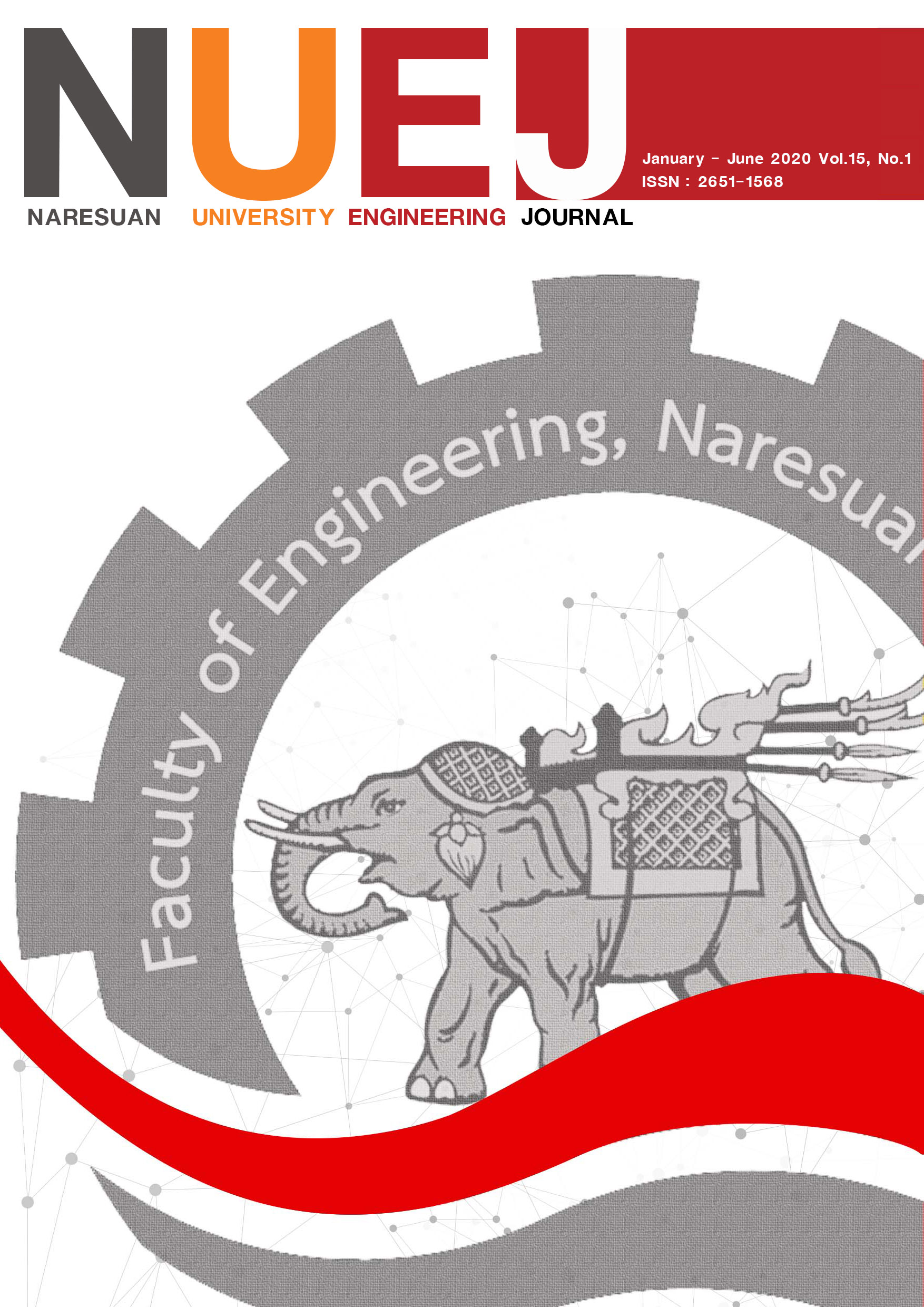An Application of Monte Carlo Simulation Techniques to Spare Parts Managing Maintenance in Petroleum Industry
Main Article Content
Abstract
The objective of this research was to analyze the optimum spare parts order quantities for maintenance activities in petroleum industry by applying the Monte Carlo Simulation Techniques. Recently, the factory of interest is facing costly spare parts management issues due to the incomprehensive spare parts inventory system and rather than establishing a strategic method, the perception has been used to manage the movement and storage of the inventory. The lack of knowledge on how to implement an inventory system leads to a large stock of various parts. To address this problem, the researcher team attempted to propose practical spare parts management to cope with the unstable demand in order to achieve the lowest total cost. The research procedure began with defining and categorizing the spare parts into A, B and C groups. Group A, accounting for 80.34 percent of the net value, was selected for the analysis. The inventory policies were defined as (s,Q) and (s,S). The data obtained from a continuous survey of the inventory system were processed by applying the Monte Carlo Simulation Model. It was found that (s,S) was the most effective policy for the inventory control that enabled the lowest total cost. According to the comparison between the (s,S) and the former purchasing plan the factory has carried out, the (s, S) strategy cost 75,394,160 baht per year while originally the factory had a total cost of 96,357,062 baht per year. Therefore, the Monte Carlo Simulation approach can reduce the total cost of inventory management of the spare parts for 20,962,902 baht per year. This 21.76 percent cost reduction has statistical significance with a corresponding 95 percent confidence level.
Article Details
References
Collado, J., Falco, A., Rodrigo, D., Sampedro, F., Consuelo, M., & Martinez, A. (2011). Application of Monte Carlo Simulation in Industrial Microbiological Exposure Assessment. In S. Mordechai (Ed.), Applications of Monte Carlo Method in Science and Engineering (pp. 83-94). InTech. https://www.intechopen.com
Furness, P. (2011). Applications of Monte Carlo Simulation in marketing analytics. Direct Data Digit Mark Pract, 13(2), 132–147. https://doi.org/10.1057/dddmp.2011.25
Gutiérrez, J., Sedeño-Noda, A., Colebrook, M., & Sicilia, J. (2003). A new characterization for the dynamic lot size problem with bounded inventory. Computers & Operations Research, 30(3), 383–395. https://doi.org/10.1016/S0305-0548(01)00105-8
Han, H. J., Kim, B. K., & Park, B. G. (2018). Monte Carlo simulation of gamma-ray distribution around spent nuclear fuel assembly using a fiber-optic Cerenkov radiation sensor. Journal of Radioanalytical and Nuclear Chemistry, 316(3), 1189–1193. https://doi.org/10.1007/s10967-018-5785-5
Ivanov, D., Tsipoulanidis, A., & Schönberger, J. (2017). Inventory Management. In D. Ivanov, A. Tsipoulanidis, & J. Schönberger (Eds.), Global Supply Chain and Operations Management (pp. 345–388). Springer International Publishing.
Jintaketkarm, P. (2012). The Application of Monte Carlo Technique for Optimizing order Quantity Policy: A Case Study in Light Bulb Industry [Master’s thesis]. Department of Industrial Engineering, Facuty ofKing Mongkut’s University of Technology North Bangkok.
Kampf, R., Hitka, M., & Caha, Z. (2016). The Application of ABC Analysis to Inventories in the Automatic Industry Utilizing the Cost Saving Effect. Naše More, 63(3), 120–125.
Leepaitoon, S., & Bunterngchit, C. (2019). The Application of Monte Carlo Simulation for Inventory Management: A Case Study of a Retail Store. International Journal of the Computer, the Internet and Management, 27, 67–83.
Lordahl, A., & Bookbinder, J. (1994). Order‐statistic calculation, costs, and service in an (s, Q) inventory system. Naval Research Logistics (NRL), 41, 81-97. https://doi.org/10.1002/15206750(199402)41<81::AIDNAV3220410106>3.0.CO;2-9
Malindzakova, M., & Zimon, D. (2019). Design Supply Cycle for Inventory Management. TEM, 8(3), 894–899. https://doi.org/10.18421/TEM83-29
Medeiros, M. (2005). Monte Carlo simulation of polarizable systems: Early rejection scheme for improving the performance of adiabatic nuclear and electronic sampling Monte Carlo simulations. Theoretical Chemistry Accounts, 113(3), 178–182.
Ohta, H., Hirota, T., & Rahim, A. (2007). Optimal production-inventory policy for make-to-order versus make-to-stock based on the M/Er/1 queuing model. The International Journal of Advanced Manufacturing Technology, 33(1–2), 36–41.
Ozkan, O., & Kilic, S. (2019). A Monte Carlo Simulation for Reliability Estimation of Logistics and Supply Chain Networks. IFAC-PapersOnLine, 52(13), 2080–2085. https://doi.org/10.1016/j.ifacol.2019.11.512
Penpakkol, P., & Intarakumthorncha, T. (2018). Inventory Management of Spare Parts under Uncertain Demand: A Case Study of Particle Board Manufacturer. The Journal of King Mongkut’s University of Technology North Bangkok, 21(1), 9-22.
Phupha, V. (2014). An Application of Monte Carlo Simulation for Optimal Order Quantity: A Case Study of Raw Materials Procurement in Processed food Industry. Kasetsart Engineering Journal, 88, 41–56.
Porras, E., & Dekker, R. (2008). An inventory control system for spare parts at a refinery: An empirical comparison of different re-order point methods. European Journal of Operational Research, 184, 101–132. https://doi.org/10.1016/j.ejor.2006.11.008
Resteanu, C., Vaduva, I., & Andreica, M. (2008). Monte Carlo Simulation for Reliability Centered Maintenance Management. In I. Lirkov, S. Margenov, & J. Waniewski (Eds.), Large-Scale Scientific Computing Vol. 4818 (pp. 148–156). Springer Berlin Heidelberg.
Sedtakomkul, N. (2011). The Applied Monte Carlo Simulation Method to Reorder Point and Order Quantity for Purchasing Under Uncertainties of Demand [Master’s thesis]. Department of Industrial Engineering, Facuty ofKing Mongkut’s University of Technology North Bangkok.http://www.ijcim.th.org/past_editions/2019V27N2/27n2Page76.pdf
Sorkhabi, R. (2017). Petroleum Industry. In R. Sorkhabi (Ed.), Encyclopedia of Petroleum Geoscience (pp. 1–2). Springer International Publishing.
Tamura, M., Morizawa, K., & Nagasawa, H. (2010). Dynamic robust optimal reorder point with uncertain lead time and changeable demand distribution. Journal of Zhejiang University-SCIENCE A, 11(12), 938–945.
Van Horenbeek, A., & Pintelon, L. (2015). A Joint Predictive Maintenance and Inventory Policy. In P. W. Tse, J. Mathew, K. Wong, R. Lam, & C. N. Ko (Eds.), Engineering Asset Management—Systems, Professional Practices and Certification (pp. 387–399). Springer International Publishing. https://doi.org/10.1007/978-3-319-09507-3_34
Xu, N. (2017). Optimal inventory policy for a dynamic stochastic inventory problem with order revision. Optimization Letters, 11(7), 1489–1497.


